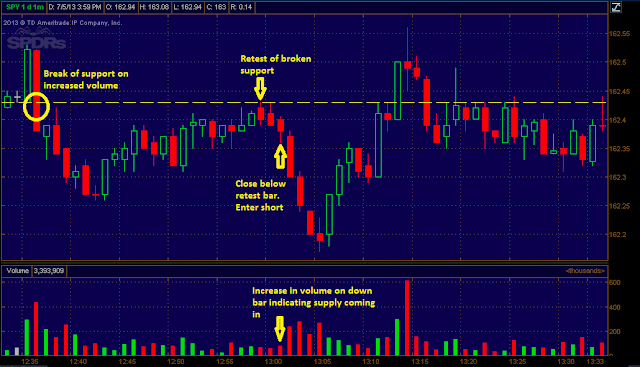No system is 100% accurate. What does it mean to be accurate in trading anyways. I was thinking about this over the weekend as my inbox was filled with promises of 100% returns on trades with holding periods of just 1-3 days from various stock and option newsletters. How can I say no to something like that? All I have to do is blindly follow a few stock option picks and bingo bango financial freedom is mine! If only life could be that easy. The only thing they are selling is hope to the hopeless. Now back to accuracy. If accuracy is measured by how many times you turned a profit on a trade well I see that as only one component to a successful trading system. Take for instance credit spread trading which usually has a very high number of profitable trades. All it takes is only one bad trade to wipe out all your gains even after a string of profitable trade. If instead these newsletters marketed themselves as capital and risk management gurus they would have more credibility with me. When you place a trade you need to decide on allocation of your risk capital (amount you are comfortable risking) and of course an exit strategy that includes both a profit target and a stop loss target. As for allocation of your risk capital this should be a percentage of your portfolio that will not get your emotions running too high shortly after placing the trade. I find traders think too much in terms of how much they are 'going to make' on the trade versus how much they are willing to lose. This way of thinking has giving me a huge psychological advantage because it keeps me from dumping a large amount of my portfolio into one position hoping for a big win. If you think of it in terms of potential losses then you will finding yourself adjusting the amount so you are more comfortable with placing the trade.. What determines my profit and loss target is simply support and resistance. Placing your trades close to pre-defined levels of support and resistance will allow for smaller losses since a break of those levels will quickly let you know you were wrong. Just remember to get out of the trade when you are proven wrong instead of hoping for a recovery in your position. The key obviously is to accurately define these support and resistance levels then use volume as your indicator to see if demand or supply is leading the move higher or lower. Break, test and enter is just a name I gave the steps of a trade setup that I execute on frequently. The sequence is as follows:
Break - Pre-defined level of support and resistance (S/R) has been broken
Test - The broken level of S/R is tested confirming previous support as resistance or vice versus
Enter - Enter the trade only after the price bar closes above/below the high/low of the test bar.
To demonstrate this lets first define our levels of support and resistance. Below is a snapshot of the SPY 15min PnF chart on Friday @12:28EST. It is clear that $162.43 is resistance and the next level above that is $162.80 (which we mentioned several times in previous posts).
The next series of charts are 1-min candlestick charts of the SPY throughout Friday to help highlight the principles. (Note I used thinkorswim vs stockcharts because of the zooming in feature of thinkorswim.) Based on the principles above I've highlighted where a trade entry might have been considered.
Example 1: Short Entry - SPY breaks $162.43 support on increased volume after which price rallies on lower volume to retest this broken area of support to confirm as resistance.
Example 2: Short Entry - SPY breaks $162.80 support on increased volume after which price rallies on lower volume to retest this broken area of support to confirm as resistance.
Example 3: Long Entry - Multiple breaks of resistance with retests.
I used a 1-min chart to demonstrate the principles but the principles are applicable to any timeframe. Also remember this is one of just a few trade setups that I utilize. Is it 100% foolproof? Of course not but with proper position sizing and risk management (I place my stops slightly above/below my S/R levels) I think you may find it profitable. Questions or concerns? Post it. Otherwise send me $199/month to start your journey to financial freedom filled with fast cars and fast women.
Thanks for reading.




No comments:
Post a Comment